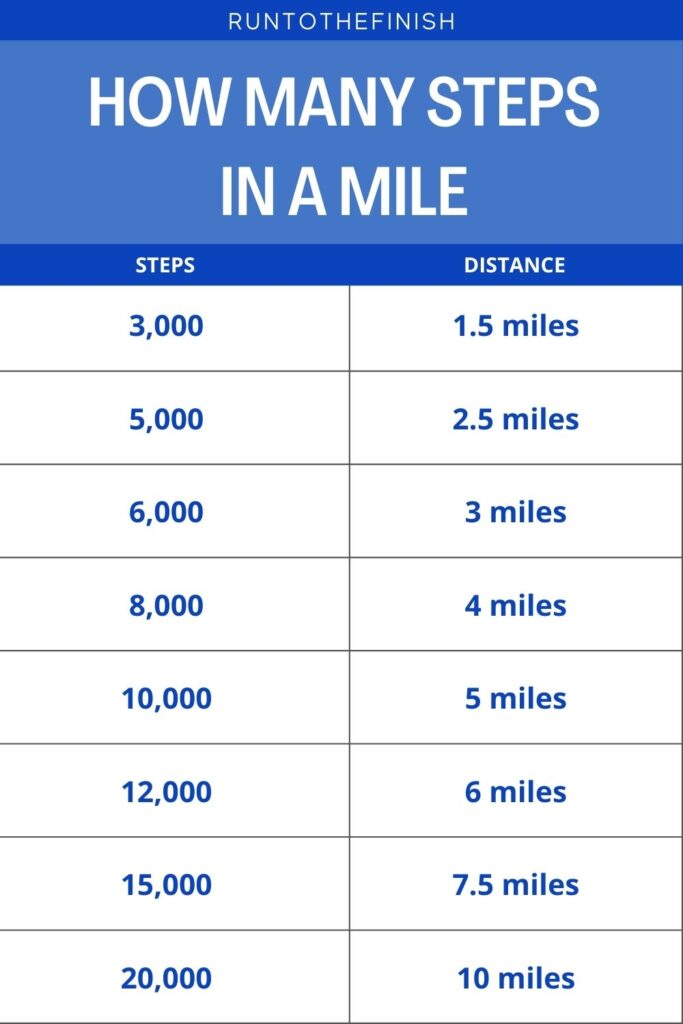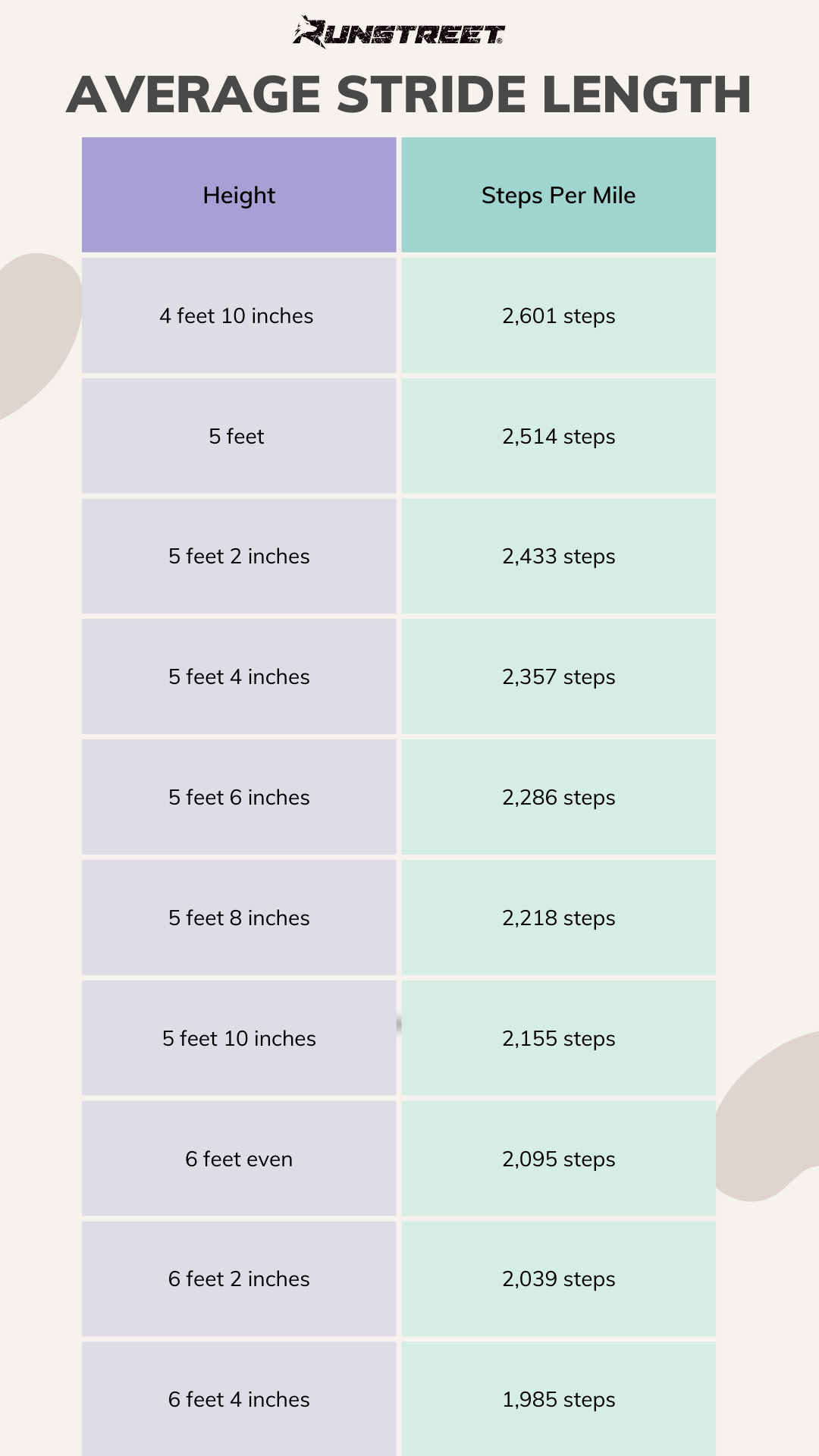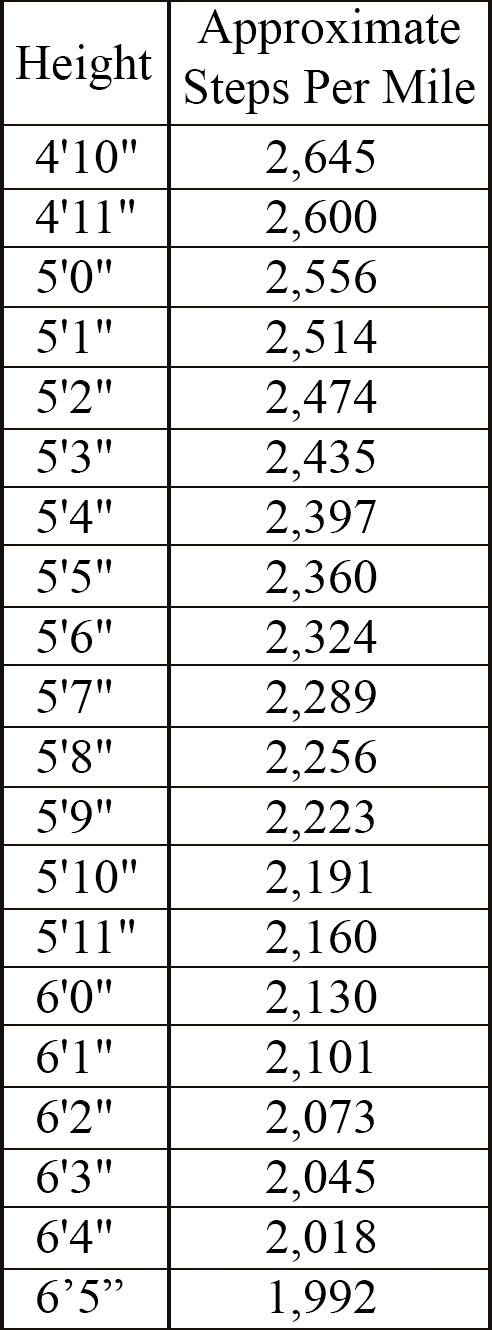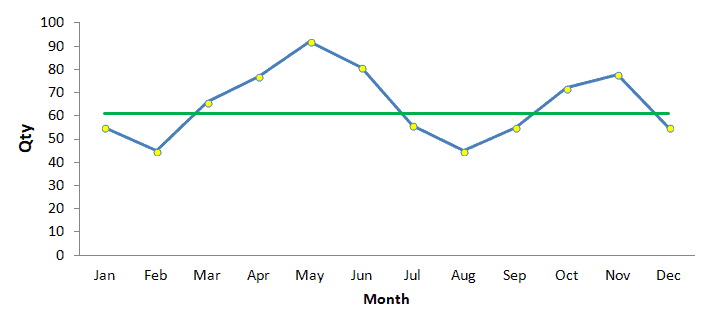How Many Steps In A Mile
There are approximately 2,000 steps in a mile. Each step is typically around 2.5 feet long.
Walking is a popular form of exercise that offers numerous health benefits. Whether you’re strolling through a park, taking a leisurely walk on a sandy beach, or following a paved trail, walking can help improve cardiovascular fitness, strengthen muscles, and promote mental well-being.
Understanding the number of steps in a mile can be helpful for setting fitness goals and tracking progress. By knowing this measurement, you can better plan your walking routine and maximize the benefits of this simple yet effective form of physical activity. Let’s explore the significance of step count in relation to walking and overall health.
Different Perspectives On The Number Of Steps In A Mile
Different perspectives on the number of steps in a mile offer a fascinating look into how individuals conceptualize distance and movement. From the common perception based on anecdotal experience to the scientific measurement of stride length and pace, the number of steps in a mile can be approached from various angles. Let’s explore these perspectives to gain a comprehensive understanding of this intriguing topic.
Common Perception
The common perception of the number of steps in a mile varies widely among individuals. Some believe it takes around 2,000 steps to cover a mile, while others estimate closer to 2,500 steps. This discrepancy highlights the influence of personal stride length and pace on the perceived number of steps required to complete a mile. It reflects the subjective nature of step counting and how it can differ from person to person.
Scientific Measurement
Scientifically, the number of steps in a mile can be determined more accurately by considering stride length and pace. By measuring the distance covered in a single step and the number of steps taken in a mile, individuals can calculate their personal stride length. This precision allows for a more consistent and reliable way of understanding the relationship between steps and distance, providing valuable insights for fitness and health tracking.

Credit: www.runtothefinish.com
Factors Influencing The Number Of Steps In A Mile
Factors such as stride length, fitness level, and walking speed influence the number of steps in a mile.
Individual Stride Length
Stride length varies from person to person, influencing steps per mile.
- Taller individuals generally have longer strides.
- Shorter individuals may take more steps to cover a mile.
Walking Pace
Walking pace affects the number of steps needed to complete a mile.
- Faster pace results in fewer steps per mile.
- Slower pace increases the steps required for a mile.
Calculating The Number Of Steps In A Mile
Want to know how many steps you take in a mile? On average, it can be between 2,000 to 2,500 steps. The exact number varies by factors like stride length and walking speed. For a rough estimate, use 2,000 steps per mile as a benchmark.
Using Stride Length
To calculate steps in a mile with stride length, divide the mile by your stride length.
Simply measure your stride – the distance between one heel strike and the next – then divide it into a mile.
An average stride is around 2.5 feet for men and 2.2 feet for women. Adjust based on your personal stride length.
Using Estimated Averages
To estimate steps per mile, average adults take about 2,000 steps per mile.
This figure can vary based on factors like height, stride length, and individual gait.
Remember, these are rough estimates, and your actual number of steps may vary.

Credit: www.pinterest.com
Impact Of Technology On Step Counting Accuracy
Technology advancements have enhanced the accuracy of step counting, providing more reliable data for measuring the number of steps in a mile. Integrating technology into fitness tracking devices has improved precision and efficiency in monitoring daily activity levels. Users can now trust the accuracy of step counts to better achieve their fitness goals.
Impact of technology on step counting accuracy With the advancement of technology, the accuracy of step counting has significantly improved. Fitness trackers, smartphone apps, and other digital devices have revolutionized the way we track our daily physical activity. Let’s delve into the impact of technology on step counting accuracy.Fitness Trackers
Fitness trackers have become increasingly popular in recent years, offering users a convenient way to monitor their daily activity. These devices utilize sophisticated sensors and algorithms to track the number of steps taken, and many are equipped with features for heart rate monitoring and calorie tracking.Smartphone Apps
Smartphone apps have also played a significant role in improving step counting accuracy. With the widespread use of smartphones, individuals can easily access pedometer apps that accurately track their steps using the device’s built-in accelerometers. These apps often provide users with insights about their activity levels and may even offer social features for motivation. In summary, advancements in technology have transformed the way we track our steps, making it easier and more accurate than ever before. Whether through fitness trackers or smartphone apps, individuals can now monitor their physical activity with greater precision, leading to a more motivated and informed approach to fitness.Practical Applications And Considerations
For those wondering about the number of steps in a mile, it typically averages around 2,000 steps. Factors such as stride length and pace can affect this count. To accurately track your steps and distances, consider using a pedometer or fitness tracker for convenience and consistency.
When it comes to understanding how many steps are there in a mile, it is crucial to recognize its practical applications and considerations. Whether you are working towards weight loss or aiming to meet your daily activity goals, knowing this measurement can help you stay motivated and track your progress effectively.
Weight Loss And Daily Activity Goals
If you are on a weight loss journey, understanding the relationship between steps and miles can be extremely beneficial. Walking is a simple yet effective exercise that can contribute to shedding those extra pounds. By setting a target in terms of steps per day, you can easily measure your activity level and work towards achieving your weight loss goals.
Experts recommend aiming for at least 10,000 steps per day, which is approximately equivalent to 5 miles. This target, although challenging for some, can be divided throughout the day. Whether you choose to take shorter walks during breaks or incorporate longer walks into your routine, hitting this step count will provide a significant boost to your weight loss efforts.
Hitting your daily activity goals is not only important for weight loss but also for overall health. Engaging in regular physical activity plays a crucial role in preventing chronic diseases and maintaining optimal fitness levels. Understanding the number of steps in a mile can help you track your progress and ensure that you are meeting the recommended target of 150 minutes of moderate-intensity exercise per week.
Walking For Health And Fitness
Walking is a low-impact exercise that is suitable for individuals of all ages and fitness levels. Not only is it an excellent way to improve cardiovascular health, but it also helps strengthen muscles, increase flexibility, and boost mood. To reap the maximum benefits, it is essential to maintain a consistent walking routine.
Knowing the number of steps in a mile can assist you in setting specific targets, whether you are aiming to increase your daily step count or challenge yourself to walk longer distances. By gradually increasing your walking distance, you can improve your endurance, burn more calories, and enhance the overall efficiency of your walking workouts.
Remember, every step counts. Whether you choose to take longer walks on weekends or incorporate short walks into your daily routine, every effort towards achieving your step goals contributes to your overall health and well-being.

Credit: www.runstreet.com
Frequently Asked Questions On How Many Steps In A Mile
How Many Steps Are There In A Mile?
On average, there are approximately 2,000 – 2,500 steps in a mile, depending on your stride length.
What Is Considered A Normal Stride Length?
A normal stride length is around 2. 5 – 3 feet, but it can vary based on factors such as height, leg length, and walking speed.
How Can I Measure My Stride Length?
To measure your stride length, walk a known distance, count the number of steps you take, and divide the distance by the number of steps.
Conclusion
Understanding how many steps are in a mile can enhance your walking or running routine. By knowing this information, you can set achievable fitness goals and measure your progress more accurately. Additionally, having this knowledge can also help improve your overall health and well-being.
So, next time you hit the pavement, remember every step counts!







